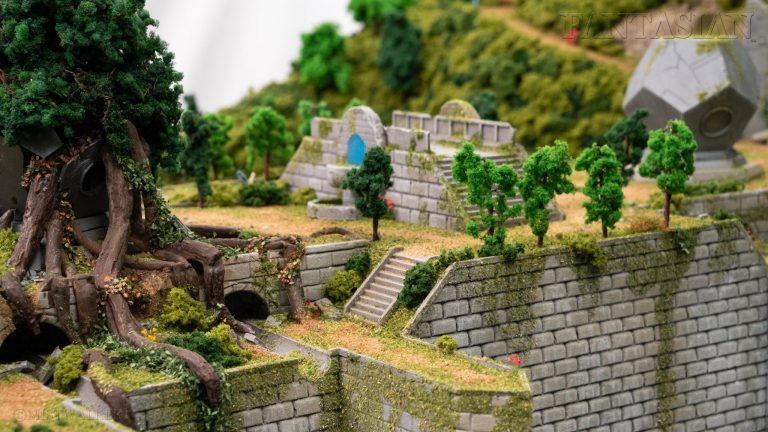

They whisk him to a doctor who constructs a makeshift body out of whatever bits and pieces cluttering the refuse-laden corridors of the underworld he could find and send him on his way to run into all sorts of nasty creatures and strange beings festering beneath the surface. The human being lucky to be selected for this subterranean fact-finding mission (like all characters, voiced by Hori in a guttural facsimile of what a future language would sound like) has his transportation and futuristic body immediately destroyed by hostile underworld denizens, his memory wiped and his head thrust into the care of a trio of bumbling junk collectors. The gritty textures, moody lighting and tangible refuse materials used to construct the sets within this modern mechanical underworld allow it to leave quite the impression as Hori takes us through the granular layers of his junk-filled world.ĭespite the enviable care placed into the unique character looks and makeshift sets, Hori’s premise keeps it wisely pared down to a comical hero’s journey. Based on his 2013 short film of the same name and produced independently over the course of seven years, Junk Head is a virtuoso showcase for Hori’s talents in the fields of character design and stop-motion animation, wherein the painstaking labor and passion is visible in every photographed frame.Īmbitious doesn’t even begin to cover Hori’s world-building and production design on display, drawing you in with his fully-realized industrial vision of a future dystopia under the surface that is teeming with an assortment of genetically baffling yet grotesquely interesting creatures. This is the setup to Hori’s gorgeously realized journey into the sprawling expanse of the Earth’s abyss, which offers audiences a tour of the director’s unique visual style. In Hori’s bleak estimation of where our current technological pursuits will lead us, mankind has gone overboard with genetic manipulation to live indefinitely at the cost of their ability to reproduce.Ī byproduct of this rampant gene splicing is the creation of the Marigans, mutant creatures that were tasked to develop the underworld to ensure the survival of the human species.Īfter the Marigans rebelled against their human overlords and evolved and thrived thousands of feet below the surface of the precarious earth, human civilization on the surface launches an ecological study to understand the Marigans’ ability to evolve in the underworld in the hopes of finding an answer to the lost function of reproduction. It doesn't feel like the proper last big hoorah for legendary game developer Hironobu Sakaguchi or composer Nobuo Uematsu (who does a tremendous job with the soundtrack), but it's still a decent, familiar JRPG experience and one of the more interesting games currently available on Apple Arcade.In Takahide Hori’s impressively realized stop-motion science-fiction epic, humanity lives ignorant to the sprawling subterranean world thriving thousands of miles beneath their feet. The Memories are well-written and tend to be more interesting than the main plot, though it's easy to see how others will be less enthusiastic about having to read short stories instead of actually playing the game.ĭespite the generic plot, Fantasian is a completely serviceable JRPG that checks all the boxes, plays with some interesting new ideas, and has a gorgeous diorama world for players to explore. Occasionally Fantasian players will stumble on "Memories" that offer a deeper dive into certain events and character backgrounds, delivered through bite-sized short stories that call to mind Mistwalker's Lost Odyssey. The cutscenes are few and far between, with much of the story conveyed through dialogue between the characters. This makes the familiar turn-based JRPG battles a little more interactive than they usually would be, and that in turn makes the minute-to-minute gameplay more fun. For instance, early on in the game players will have a magic user join their party, and they are able to curve their spells to hit multiple enemies at once. Generally speaking, most of Fantasian's combat is standard turn-based JRPG fare, but the game occasionally makes use of touchscreen controls for some clever inputs. The Dimengeon Battles in Fantasian offer something new, and the game also manages to do some new things with the actual combat as well. This is an interesting, fun idea and certainly one aspect of the game that helps it stand apart from the many other JRPGs out there.

Dimengeon Battles in Fantasian are unique in that they allow players to collect monsters that they find in the field (instead of fighting them in a random encounter like usual) and then fight them all at once in a separate dimension in exchange for various rewards. While it's a largely derivative experience, Fantasian does do some things to set itself apart from other turn-based JRPGs, like with its Dimengeon Battles.


 0 kommentar(er)
0 kommentar(er)
